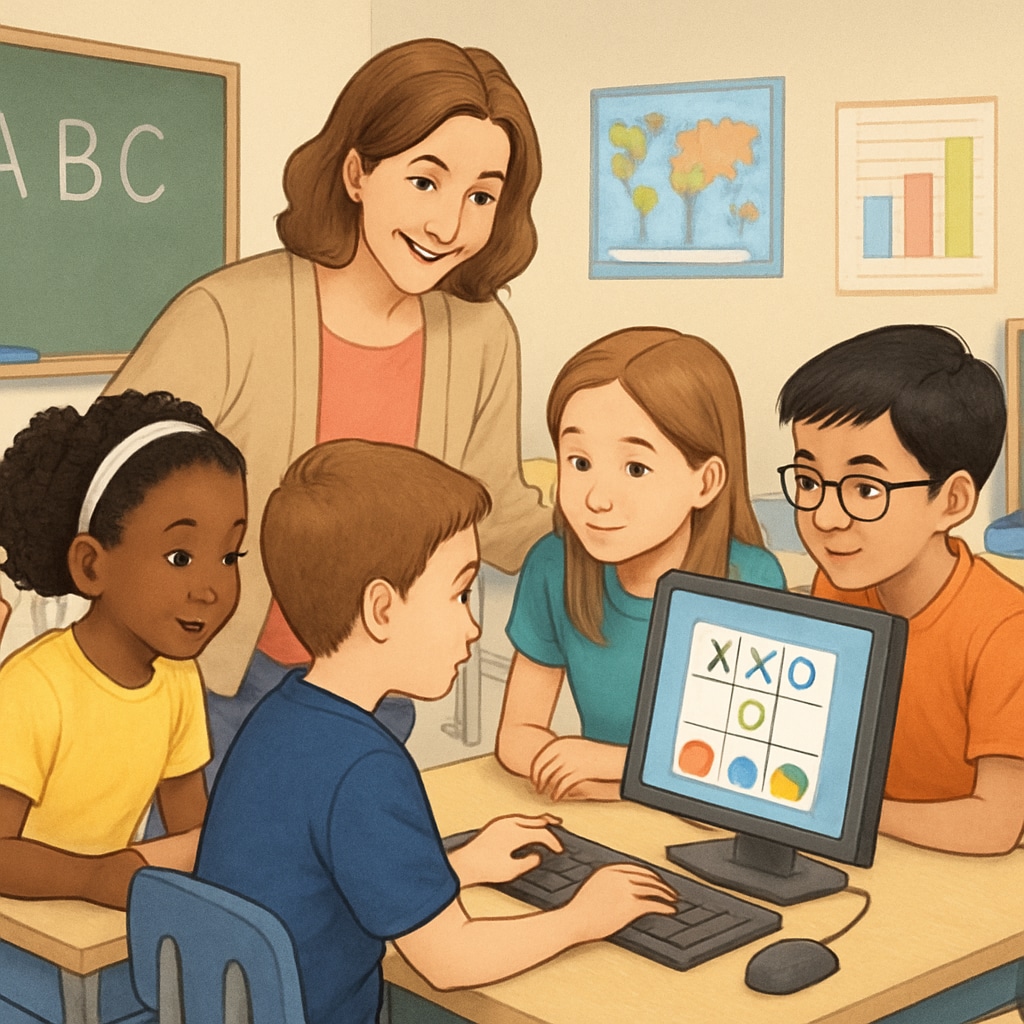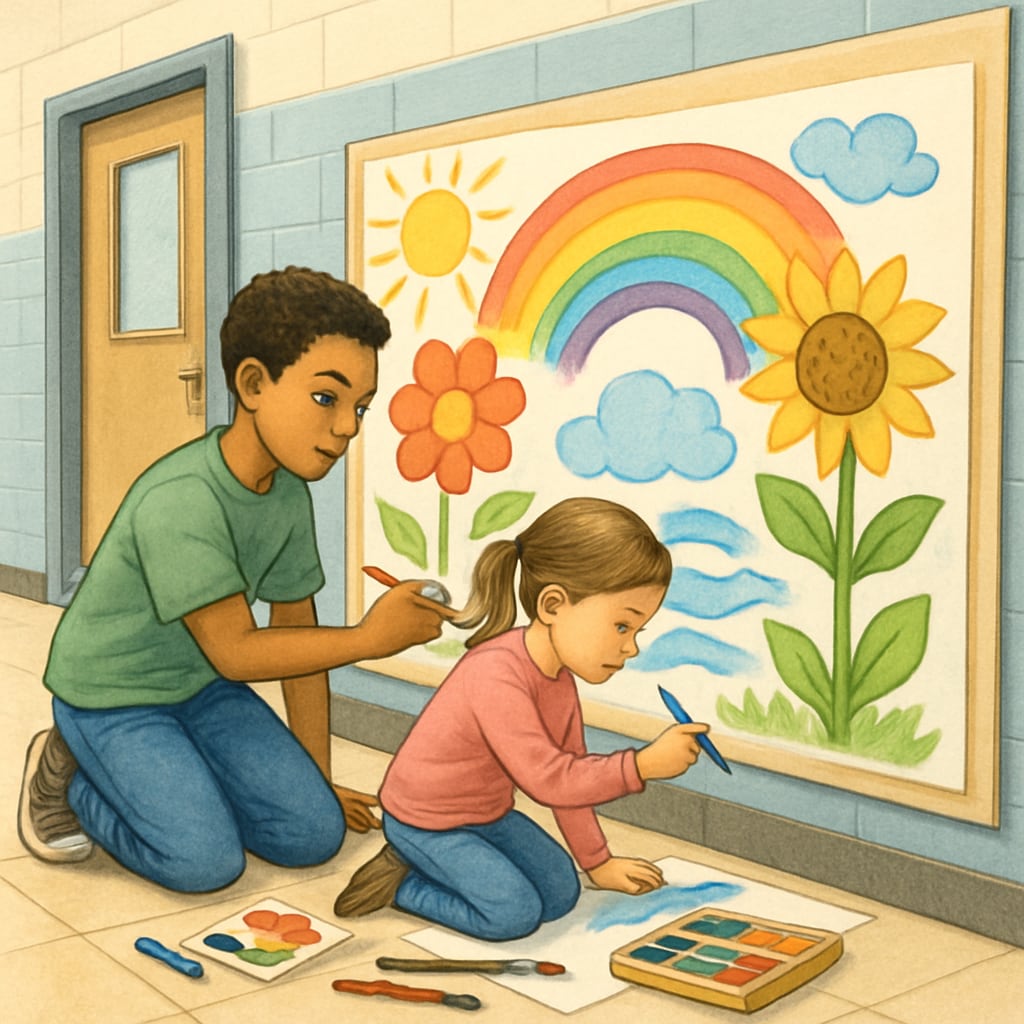Creating meaningful learning experiences for children of varying age groups is both a challenge and an opportunity. By combining the unique strengths of kindergarteners and fourth graders, cross-grade activities can foster mutual learning, enhance social skills, and create a sense of community. This approach, often referred to as a “kindergarten buddy program” or “cross-grade collaboration,” emphasizes creative, interactive activities and structured computer-based learning. Let’s explore how such programs can be designed effectively to benefit both age groups.
Why Cross-Grade Collaboration Works
Cross-grade collaboration leverages the strengths of different developmental stages. Kindergarteners bring curiosity and a fresh perspective, while fourth graders offer mentorship skills and more advanced abilities. This unique pairing allows both groups to learn from one another. For example, younger children often look up to older peers as role models, while older students develop leadership and communication skills by guiding their younger counterparts.
Additionally, these activities promote inclusivity, patience, and problem-solving. From shared story-reading sessions to collaborative art projects, the possibilities for fostering teamwork and creativity are endless. Furthermore, integrating technology, such as structured computer learning programs, can provide an engaging platform for skill-building and collaboration.

Interactive Activities That Bridge the Gap
Designing activities that cater to both kindergarten and fourth-grade students requires careful consideration of their developmental stages. Below are a few innovative ideas:
- Story Creation: Partner a fourth grader with a kindergartener to create a simple story. The older student can write while the younger one contributes ideas and illustrations. This activity nurtures creativity, literacy, and teamwork.
- Art Projects: Collaborative art projects, such as murals or themed crafts, allow students to work together toward a shared goal. These activities strengthen fine motor skills for kindergarteners and enhance leadership for fourth graders.
- Structured Computer Learning: Use educational software designed for younger learners. Fourth graders can guide their buddies through simple tasks, such as learning to use a mouse or completing basic coding exercises. This fosters both technical skills and mentorship.
- Gardening Projects: Outdoor activities like planting flowers or vegetables encourage teamwork and an understanding of nature. Older students can explain the steps while younger ones actively participate.
- Math Games: Introduce interactive math games that accommodate different skill levels. For example, fourth graders can teach basic counting or patterns while reinforcing their own arithmetic skills.
These activities not only build academic skills but also strengthen interpersonal connections, creating a supportive learning environment for all students involved.

Incorporating Technology for Mutual Growth
Technology can play a pivotal role in cross-grade activities. Structured computer learning programs, tailored to younger students, provide an excellent platform for older students to act as mentors. For example:
- Educational Apps: Apps like ABCmouse or Starfall are designed for young learners. Fourth graders can guide kindergarteners through activities, helping them with navigation and comprehension.
- Basic Coding: Simple coding platforms like ScratchJr introduce programming concepts in an accessible way. Kindergarteners can design basic animations with the help of their fourth-grade partners.
- Typing Games: Typing programs that teach basic keyboard skills can be a fun way for both groups to improve their digital literacy.
Integrating technology not only builds essential computer skills but also prepares students for a technology-driven world. Moreover, it provides an opportunity for older students to reinforce their own knowledge while teaching younger peers.
Tips for Successful Implementation
To ensure the success of cross-grade collaboration programs, consider the following tips:
- Set Clear Objectives: Define the goals for each activity, such as improving literacy, fostering teamwork, or building computer skills.
- Pair Students Thoughtfully: Match students based on complementary strengths and personalities to encourage effective collaboration.
- Provide Guidance: Teachers should facilitate the activities, offering support and ensuring that both age groups are equally engaged.
- Celebrate Progress: Acknowledge achievements through certificates, group presentations, or showcases to motivate students and build confidence.
By implementing these strategies, educators can create a balanced and enriching environment that benefits both kindergarteners and fourth graders.
In conclusion, cross-grade collaboration activities offer a unique opportunity to bridge age and skill gaps while fostering mutual growth. Whether through shared storytelling, creative art projects, or structured computer learning, these programs cultivate essential life skills and build lasting connections between students. Embracing this approach can transform traditional classroom dynamics into a vibrant, collaborative learning community.


